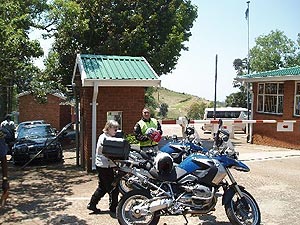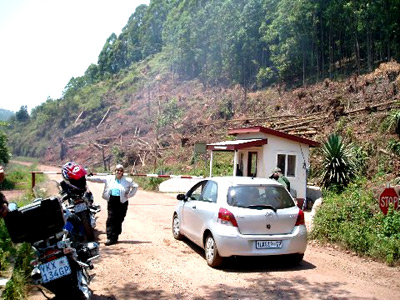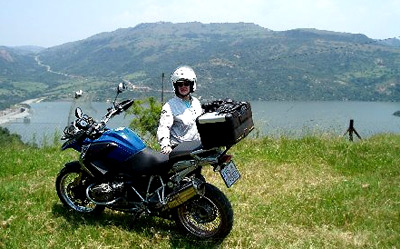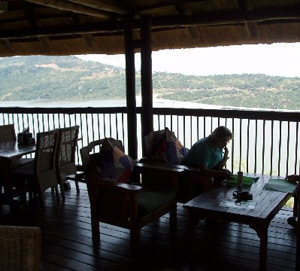| The Journal of Provincial Thought |
|
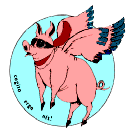 |
|||||||||||
| John Rice | ||||||||||||
| Hatari It Isn't Part 3 |
to page 2 to page 3 |
|||||||||||
| ________________________________________________ | see Part 1 (jpt Issue 18) see Part 2 (jpt Issue 19) |
|||||||||||
| On Friday, we headed out at 8 am to visit the The road we took to the kingdom had recently been a dirt track, but now was widened and paved for the most part. We stopped at the top of the mountain to look back down whence we had come. We could see the dirt roads still remaining, going off into the distance. I could easily tell how isolated this place must have been if that was the main route in.
Then after a few yards from the SA border, we came to the Swazi border post, where we had to show our documents again and have our passports stamped. We passed through a small town, on potholed, broken pavement, and on the other side of this village, were stopped again at a checkpoint. These soldiers again wanted to check the papers for the bikes, but did not demand our passports.
At the end of the dirt portion, we filled up at a petrol station in a small town that was having some kind of market day or celebration. There were hawkers selling their wares on the streets, music playing from different directions and a constant din of voices happily yelling across streets in what sounded like a variety of languages. The bikes looked as if we'd spray painted them with reddish-brown dust. |
||||||||||||
|
|
Brenda admires the view, but wonders when we're going to get back on pavement | |||||||||||
| For several days prior, whenever we went to restaurants that gave us mints at the end of the meal, Darryl had told us to “save them for the Swazi kids.” On the way out of the overlook, we were met by a group of children who began dancing for us, an enthusiastic if not entirely choreographed performance. We caught on quickly and Brenda began shelling out the collected sweets. As soon as each child had received one, they left us and turned to Darryl, even though Brenda still had a few left. I think they'd been through this before...
|
||||||||||||
| Darryl lead us to the Swazi Candle Factory, a small enterprise set in a group of shops off yet another dirt road. This is an effort by locals to use their resources and labor to produce something for export and tourism, controlled by themselves within the country. The slogan is "Lighting Africa." We watched a woman at a small table, working quickly and expertly to make the brightly colored candles, dipping each one in a bucket of water to set the wax. On display were hundreds of different varieties, shaped like African animals or odd geometric configurations, all in multicolored wax that seemed impossible to deconstruct into their component parts. Traveling by motorcycle does limit the number of large heavy things one can bring back, so we got only a small sample of their wares. | ||||||||||||
| at the Swazi candle factory | 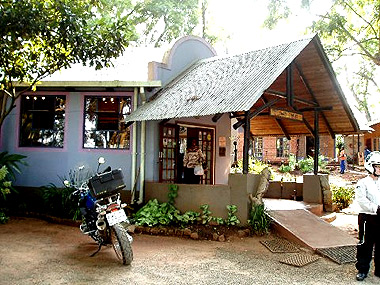 |
|||||||||||
| Return to top | See page 2 --> | |||||||||||
|
||||||||||||
| Copyright 2011- WJ Schafer & WC Smith - All Rights Reserved | ||||||||||||
